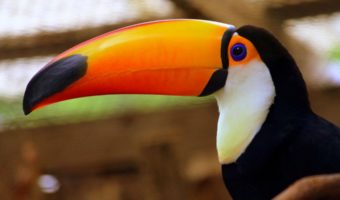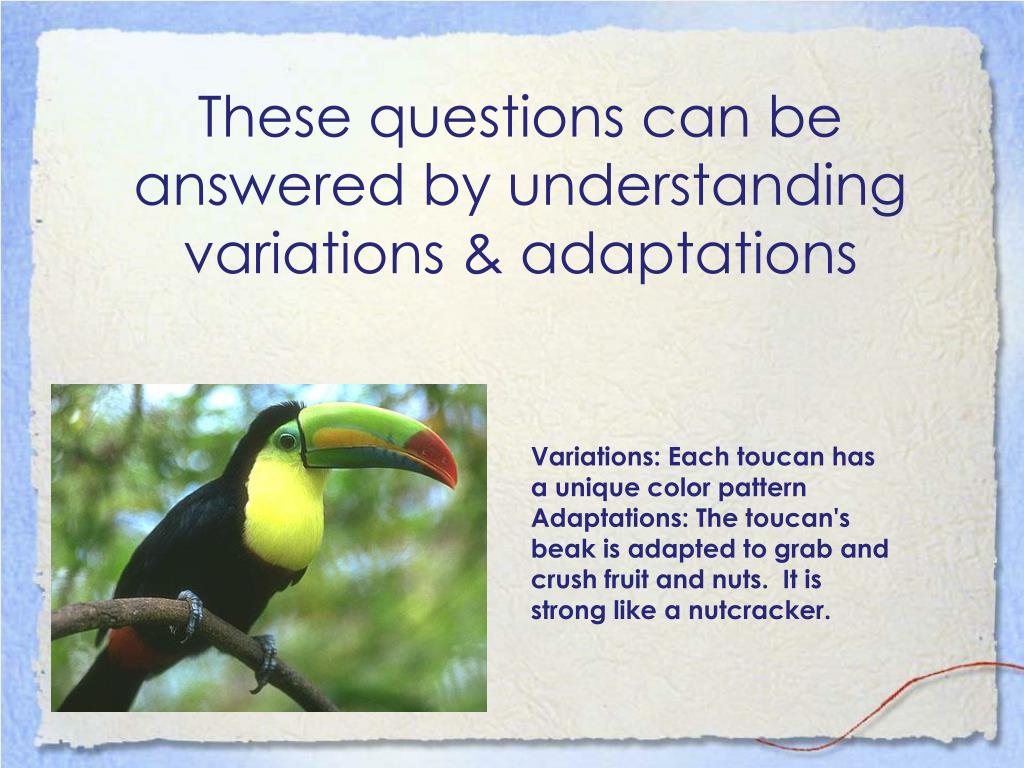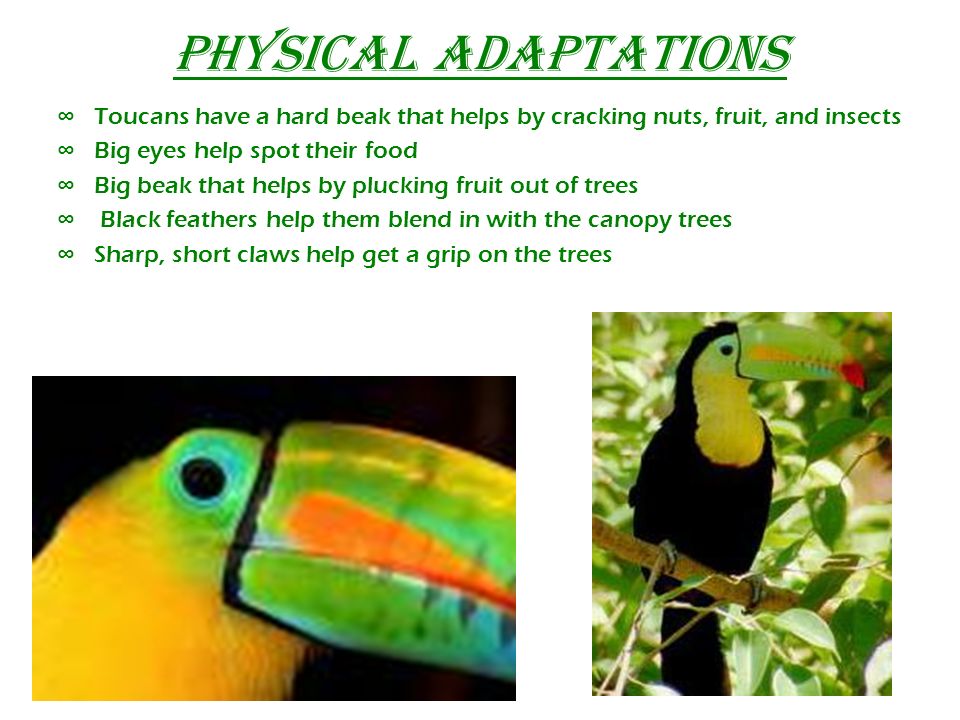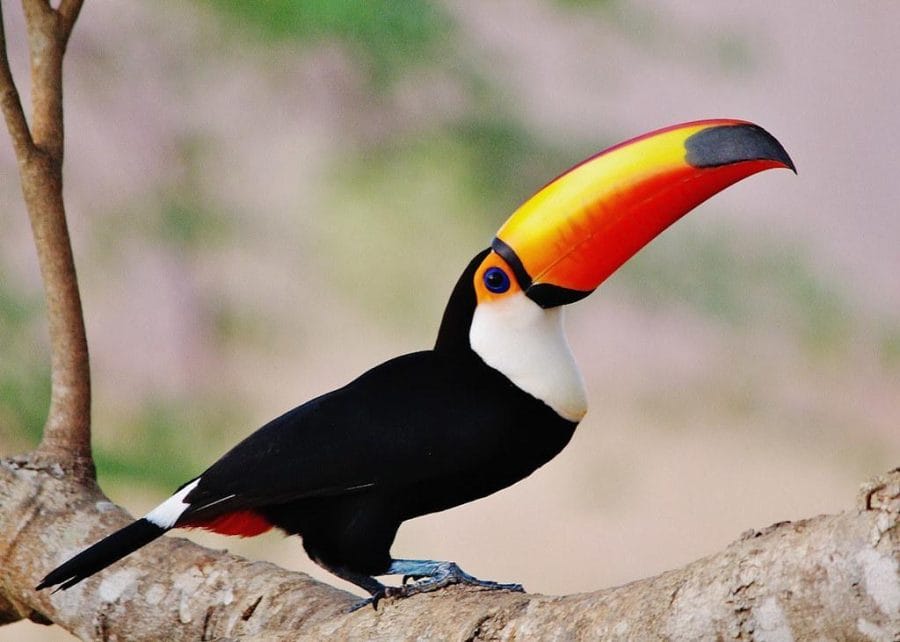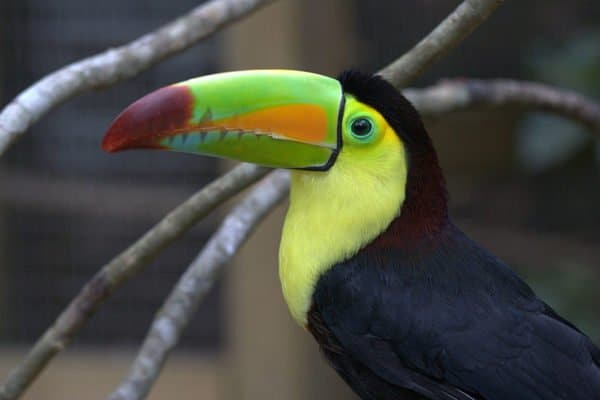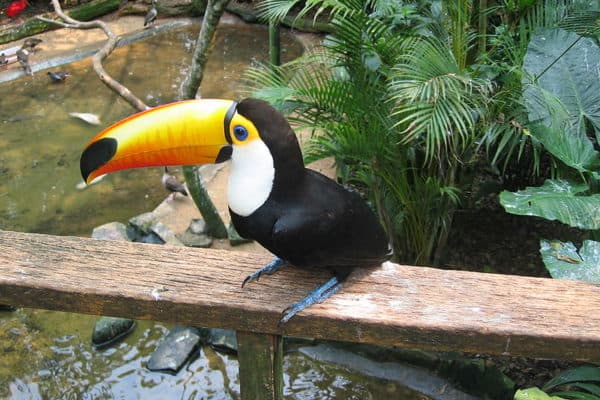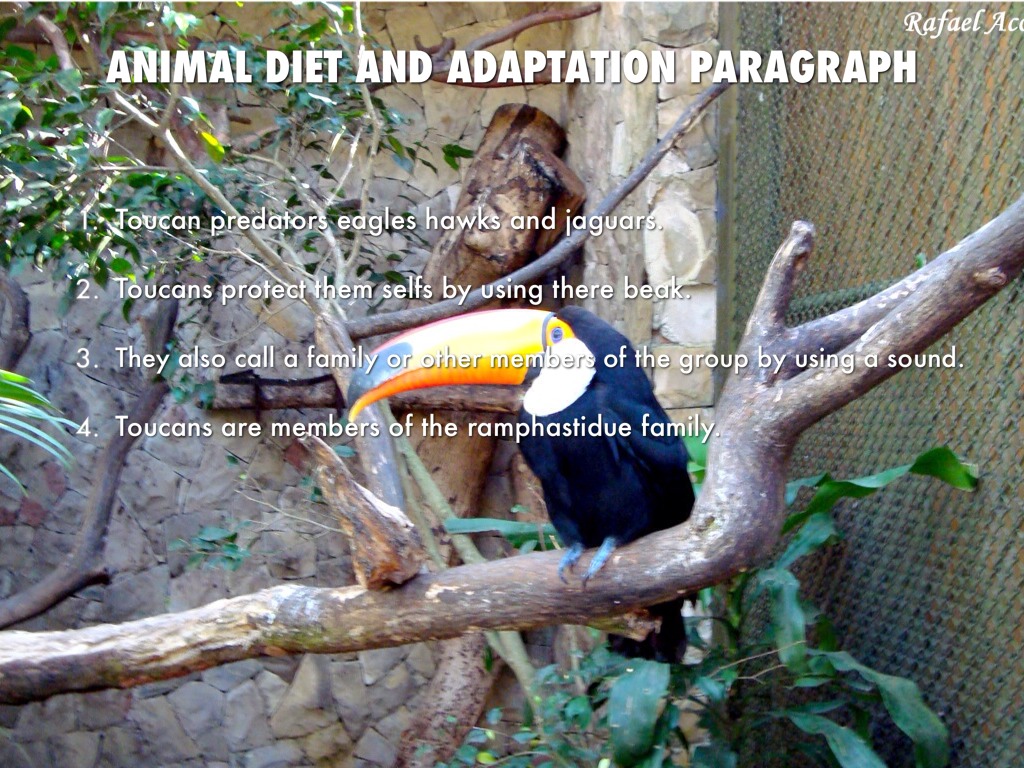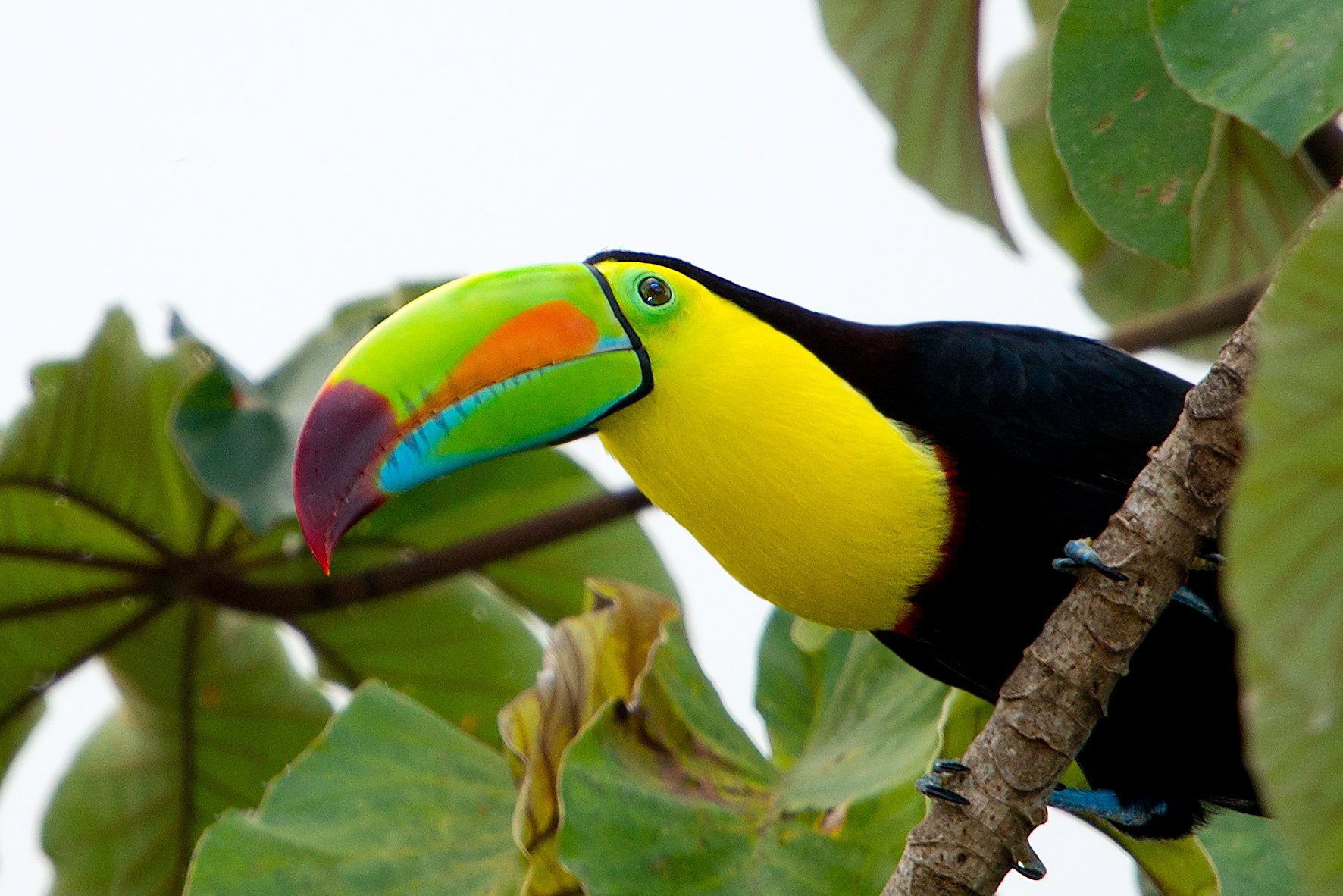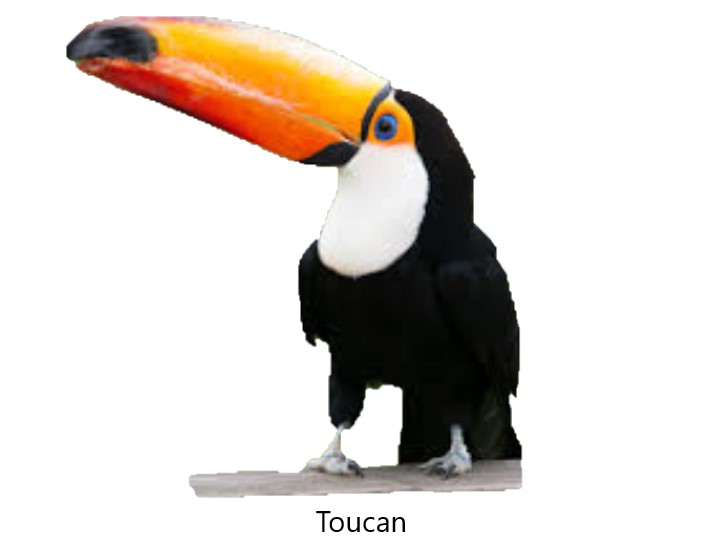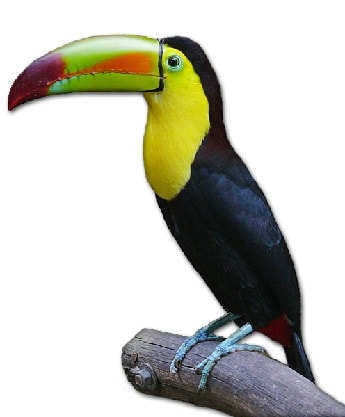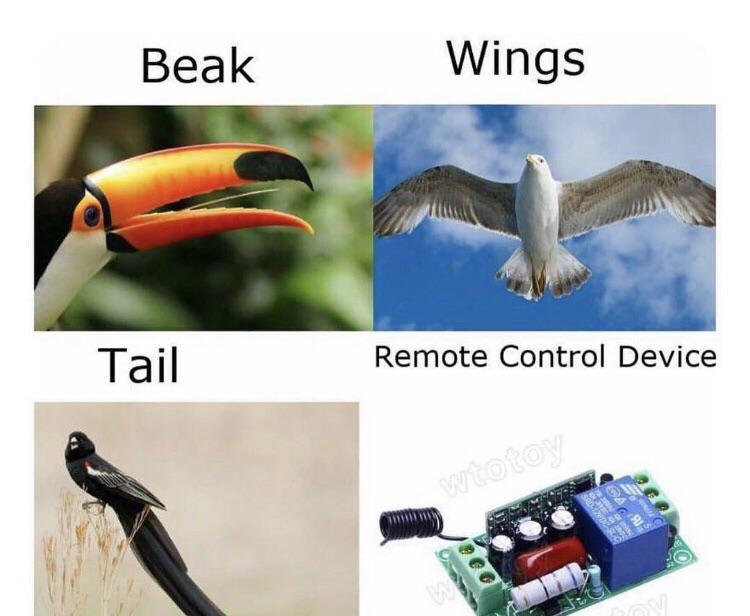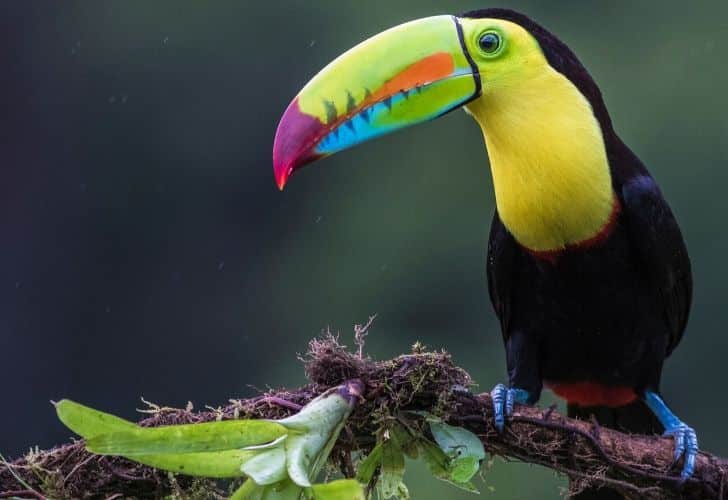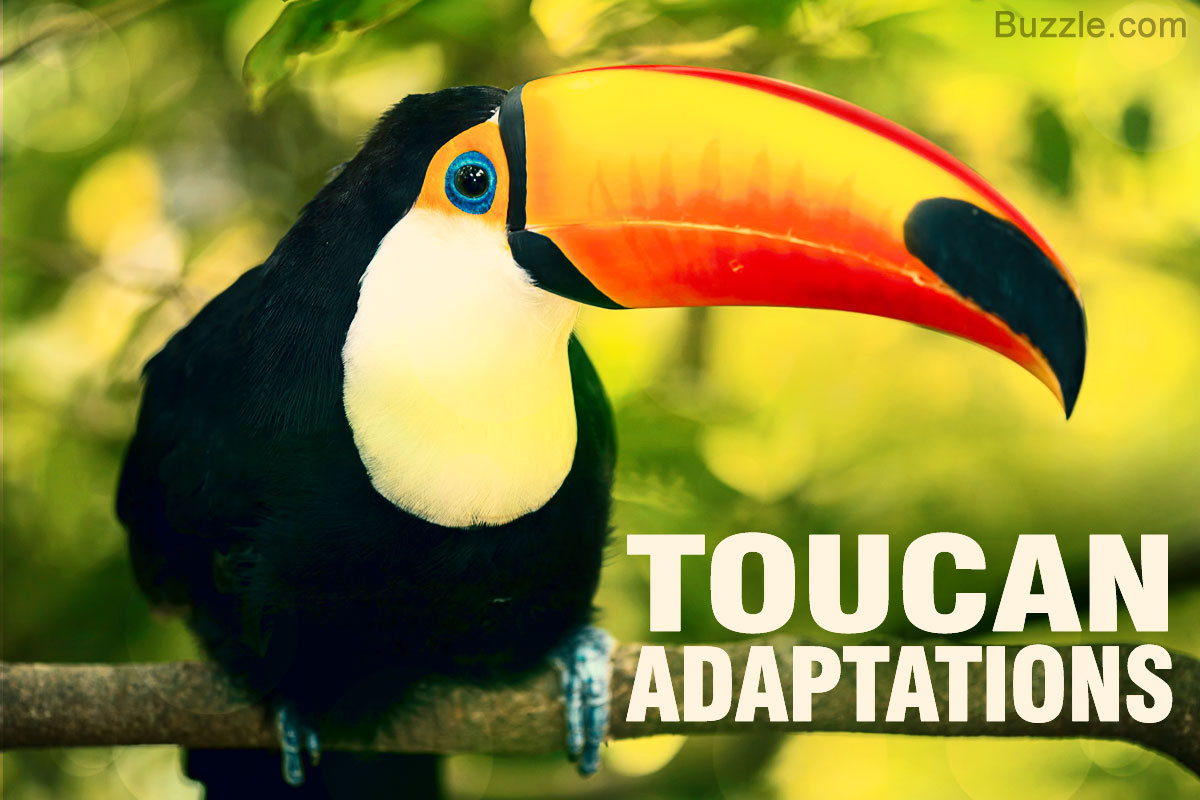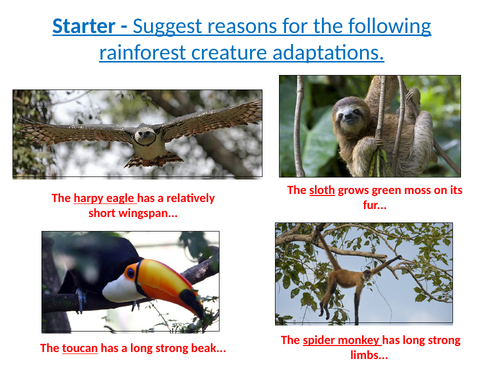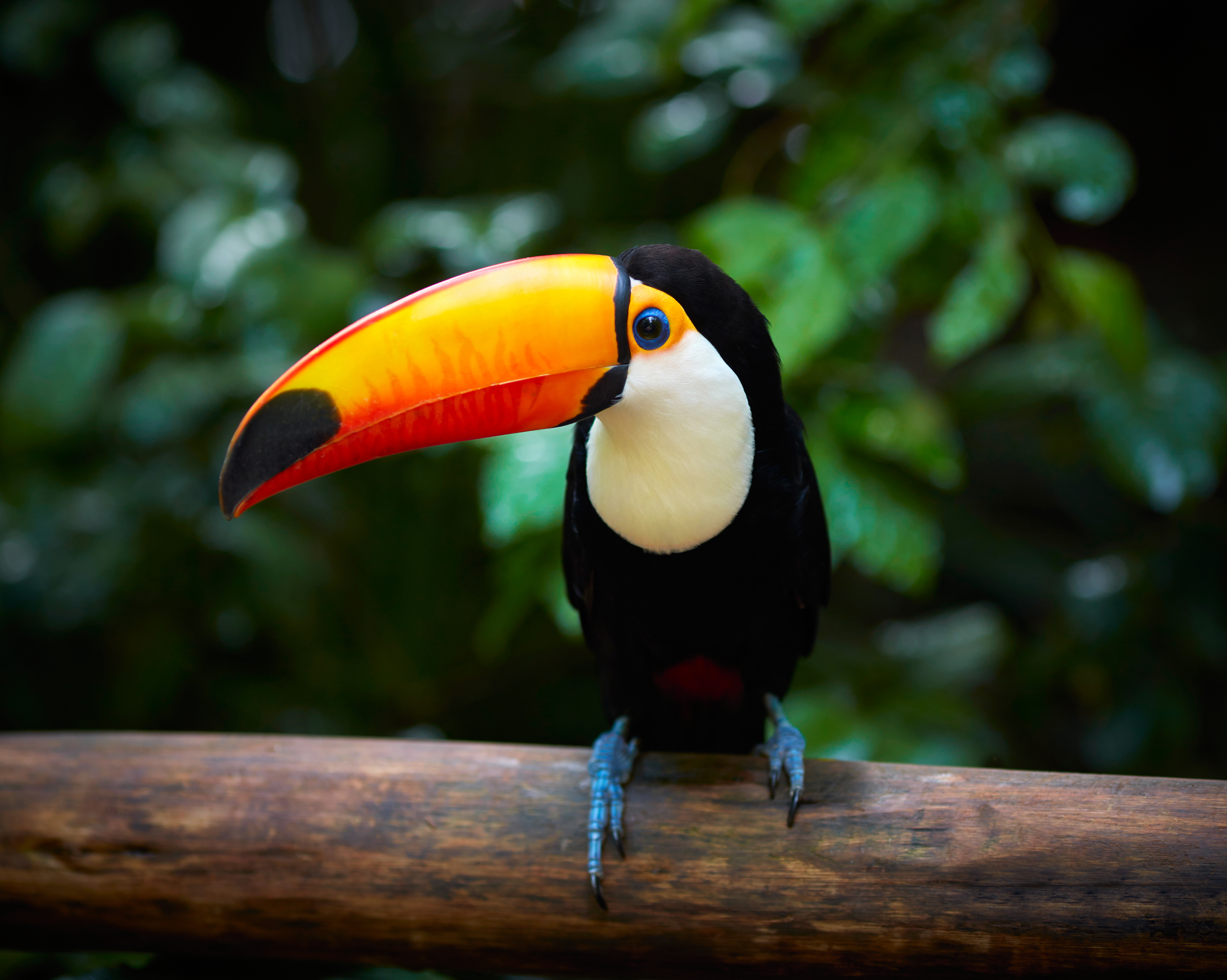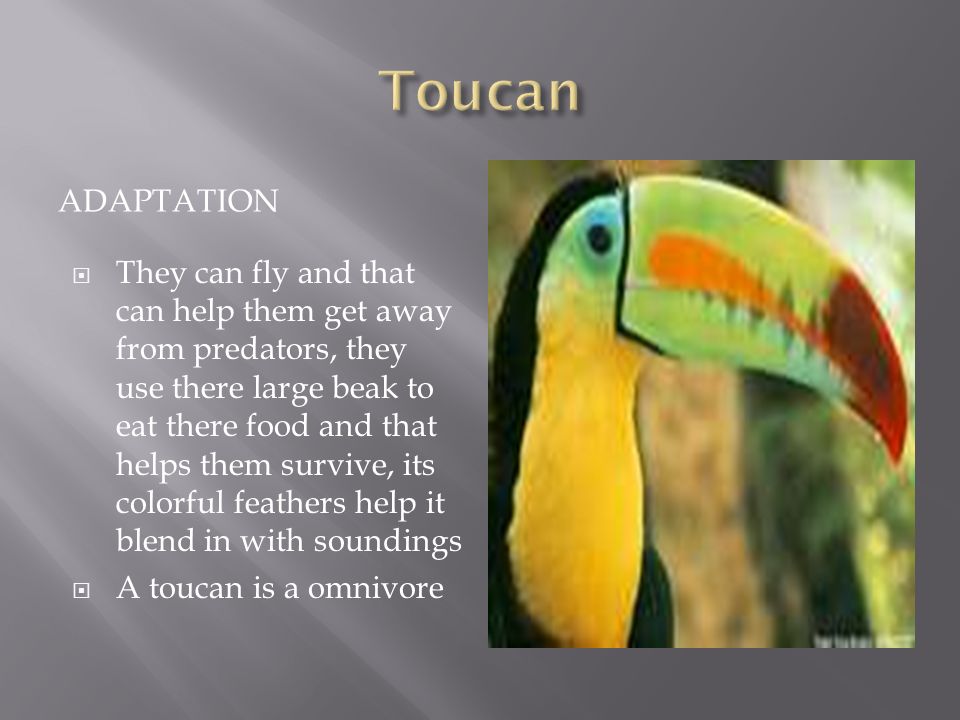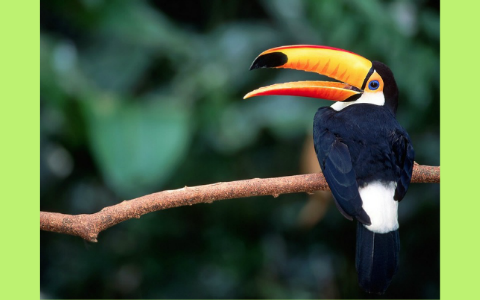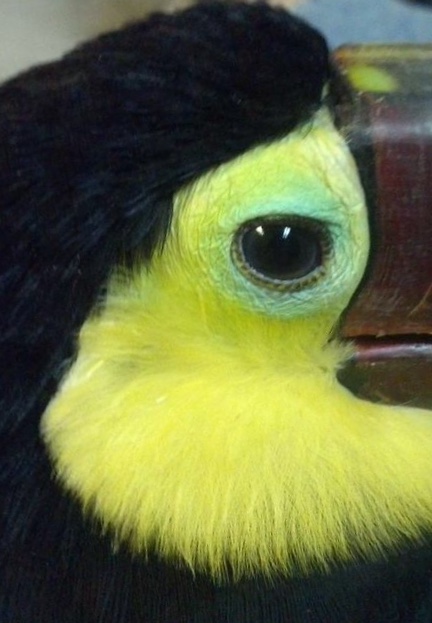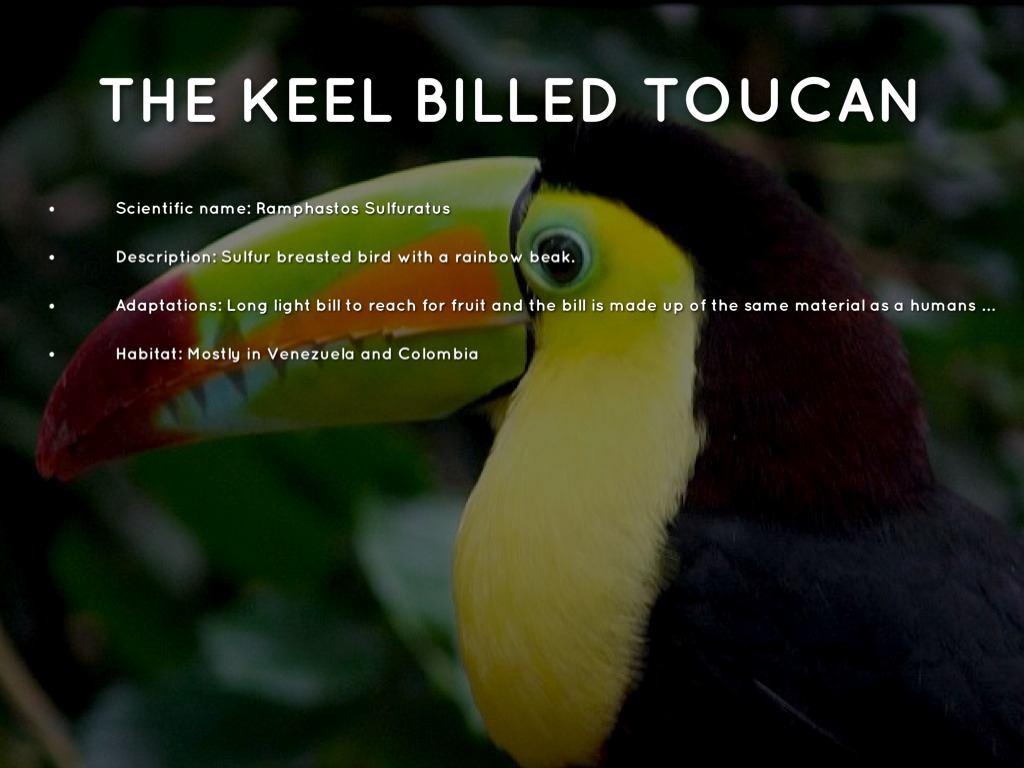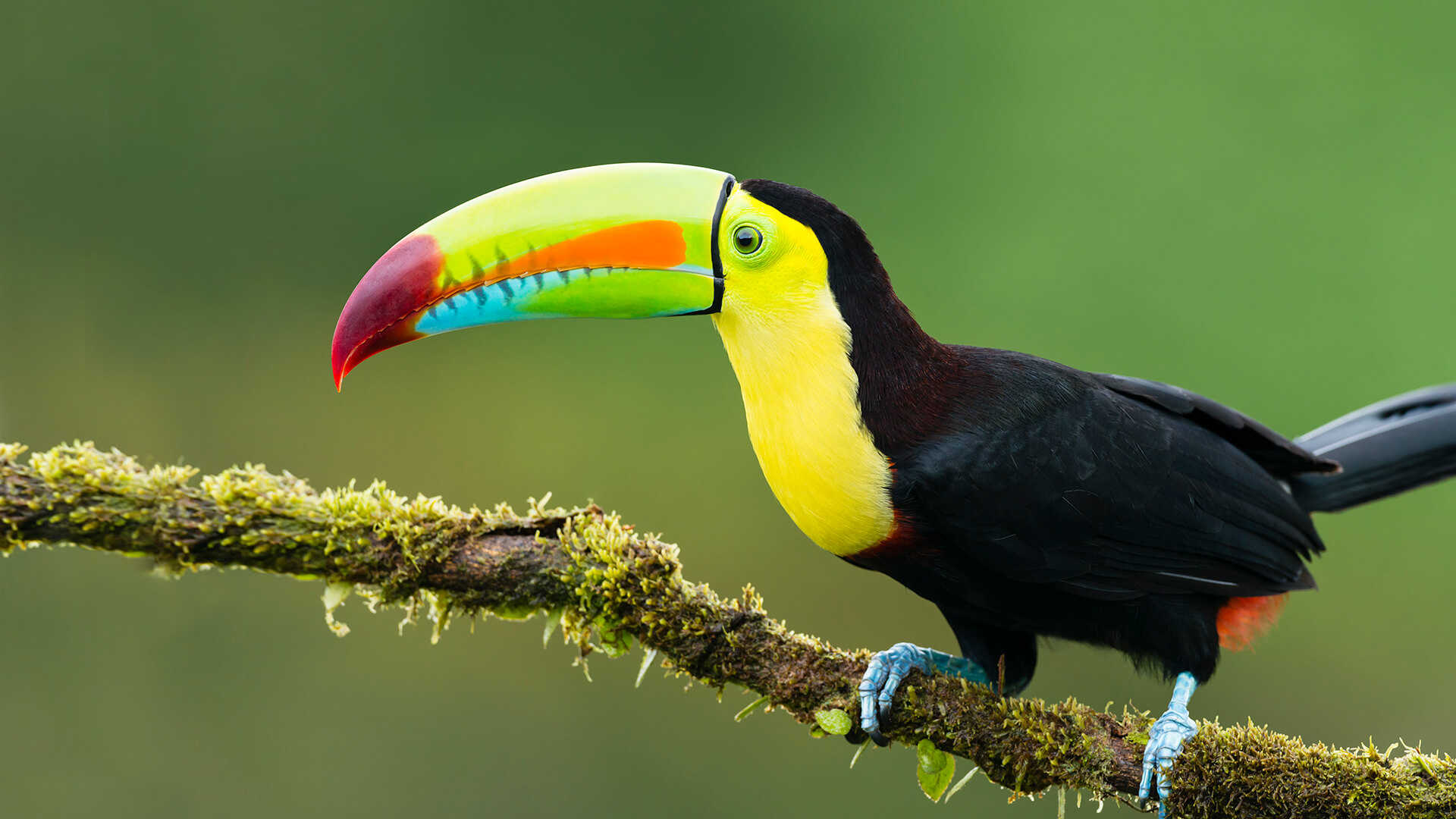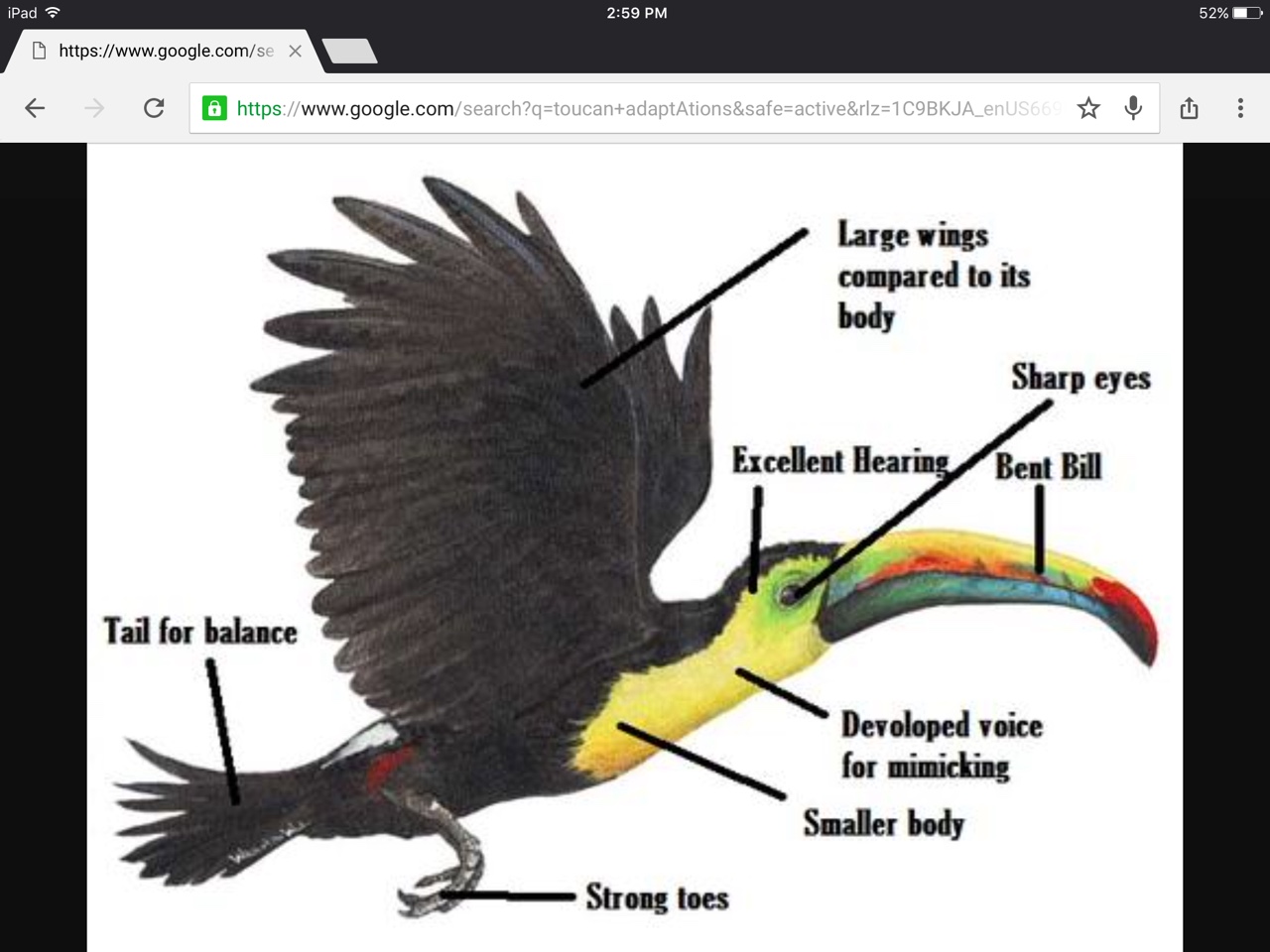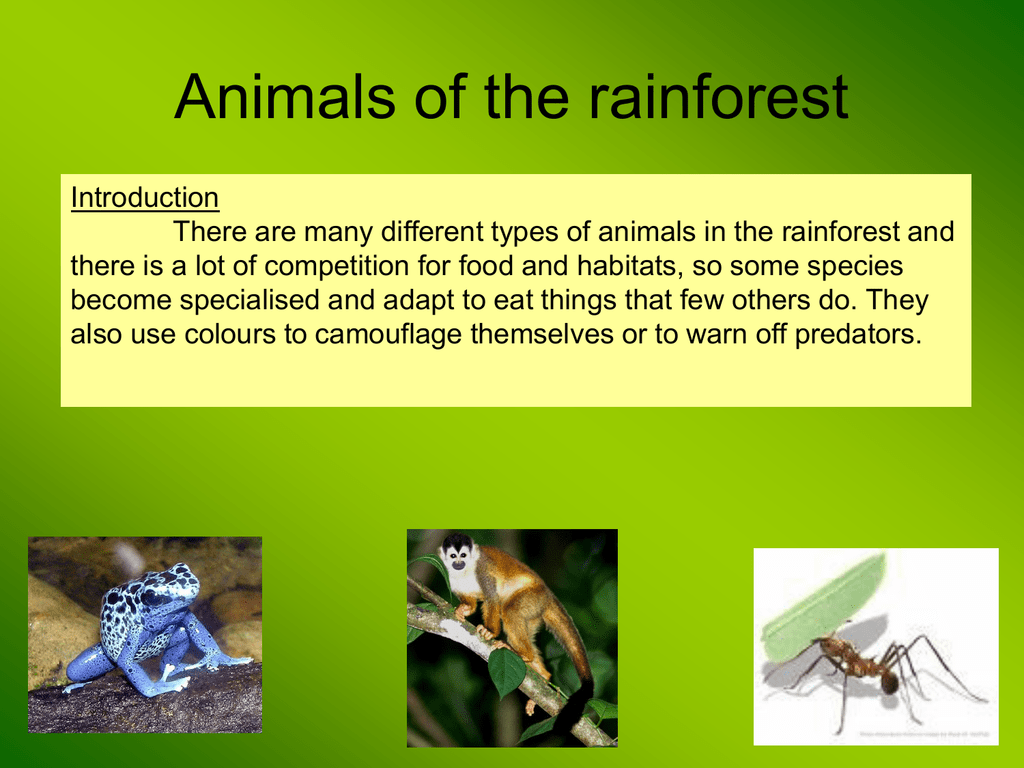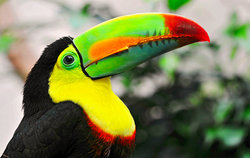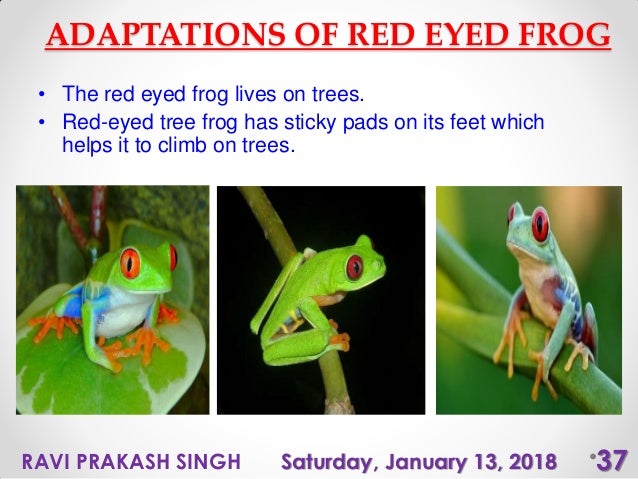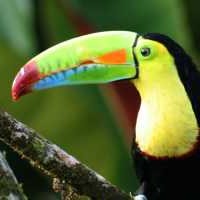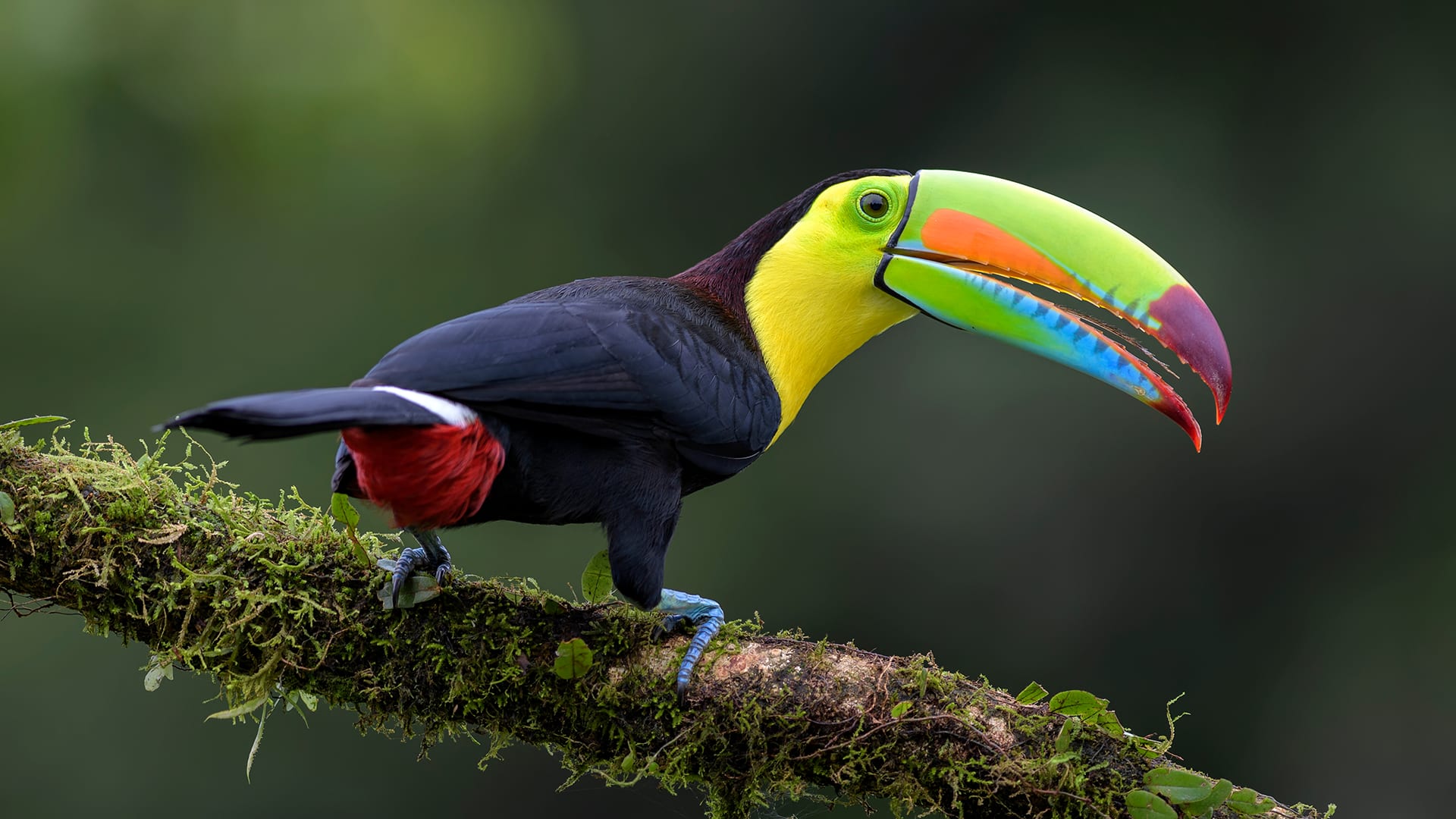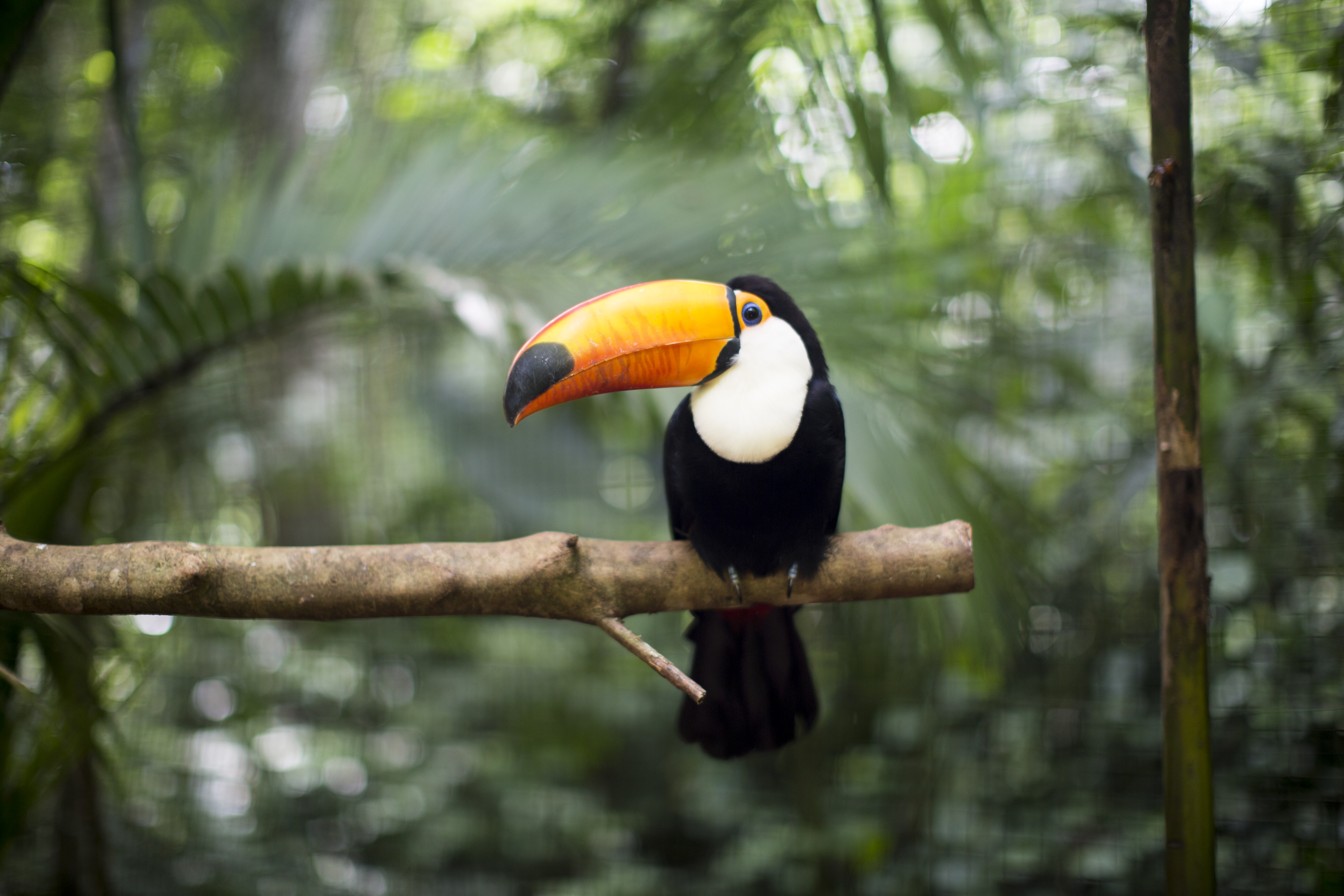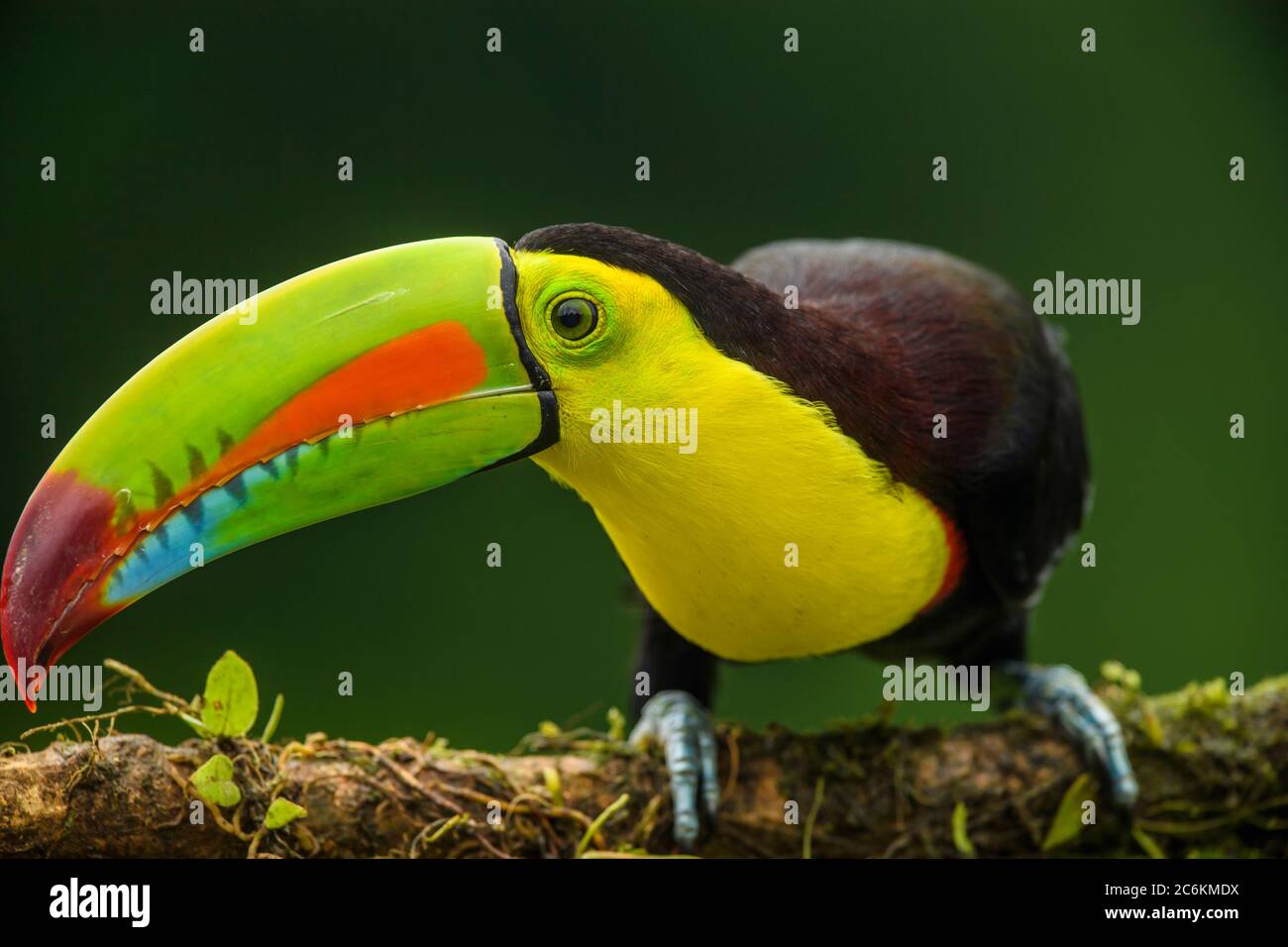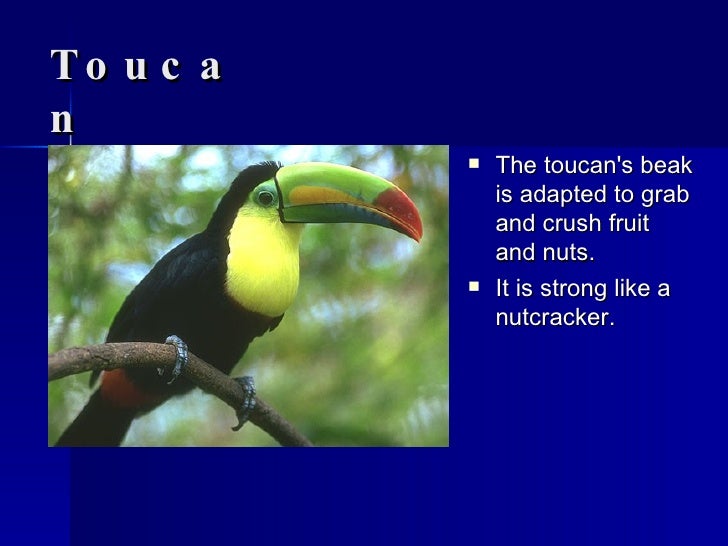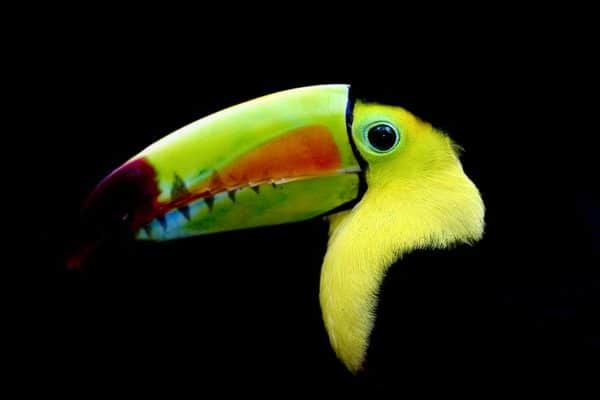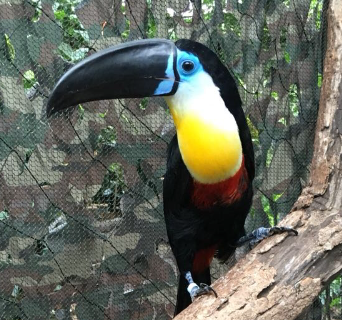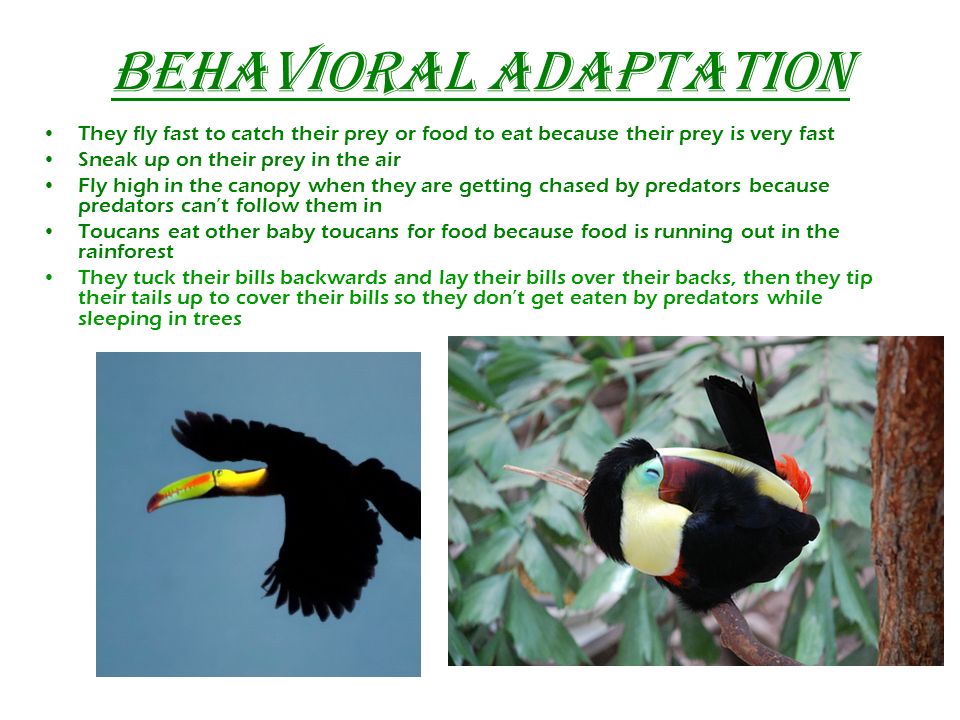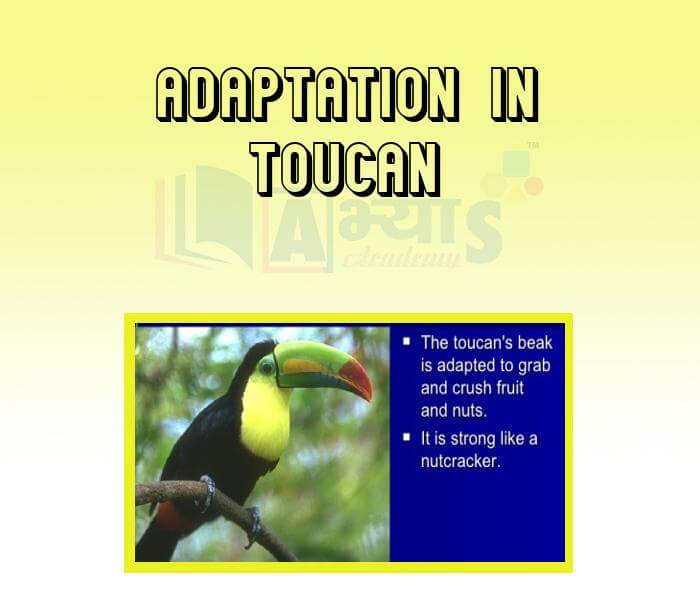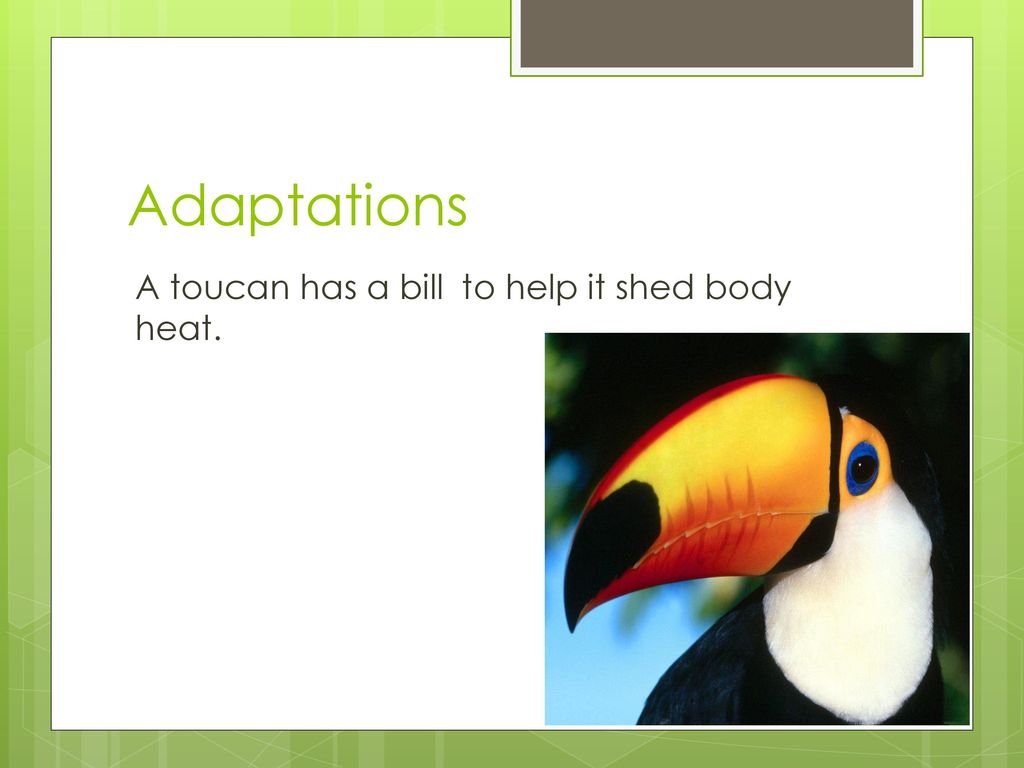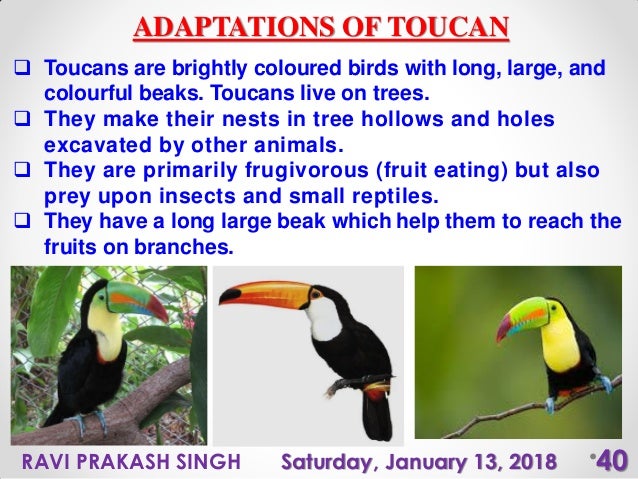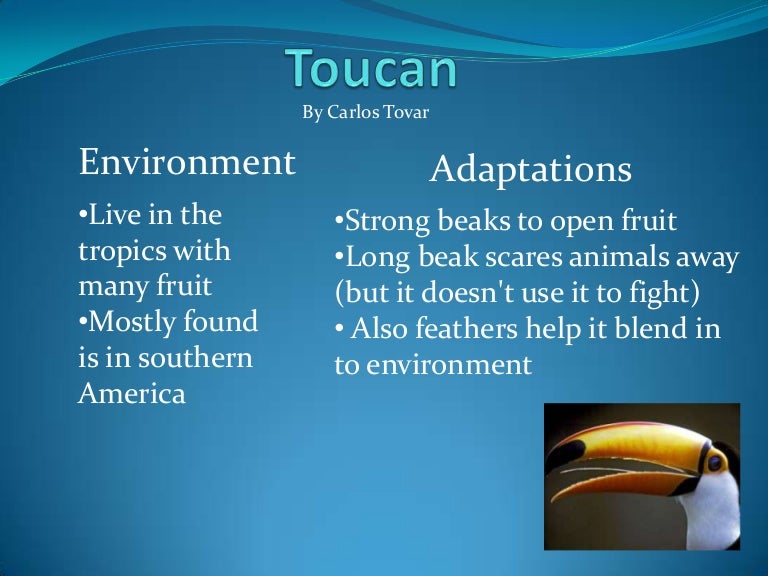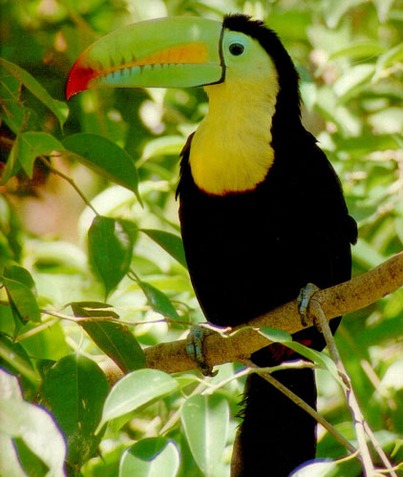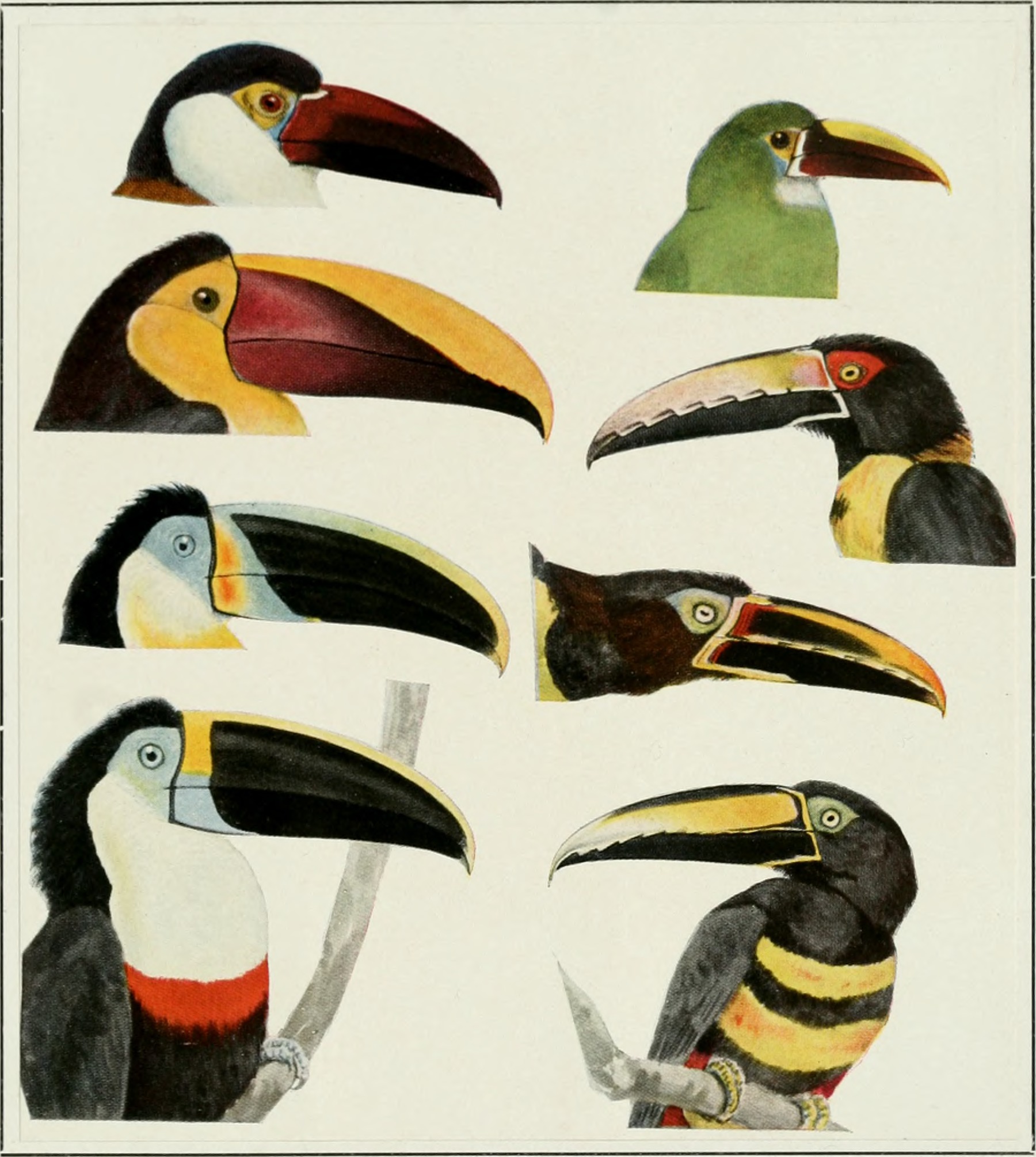What Is The Adaptation Of A Toucan
The rear three vertebrae are fused and attached to the spine by a ball and socket joint.

What is the adaptation of a toucan. A structural complex probably unique to toucans involves the modification of several tail vertebrae. Researchers believe the beak may attract a mate. The bill is useful as a feeding tool.
Toucans are known to reach deep into tree cavities to grab eggs from other birds or to dig deeply into their own nesting cavities to clear them out and pairs have been seen tossing fruit to one another in a courtship ritual. Recent research has found that toucans regulate their body temperature by adjusting the flow of blood to their beak. The birds use them.
Like manakins of the forest understory toucans contribute to the maintenance of tropical forest diversity because they consume and disperse seeds of many plant species. Theyve tailored to stay within the cover as they do not fly very nicely. This is designed to give it better grip on branches perching spots as well as climb tree which are what the toucan spends the majority of its time doing.
Adaption the toucan has developed a very large beak which allows it to reach fruit on lighter branches. The toco toucan can also regulate the flow of blood to its bill allowing the bird to use it as a way to distribute heat away from its body. Another adaptation the toucan posses is its four toes on each foot.
Still others believe it is an adaptation that allows the toucan to reach food way out at the ends of branches that are not strong enough to hold the bird itself. A toucans tongue is long up to 1415 cm or 6 inches narrow grey and singularly frayed on each side adding to its sensitivity as a tasting organ. The beak provides a means of preening feathers and defending against smaller predators.
Two which face forwards and two which face backwards. They tuck their beak underneath their wings once they sleep to maintain heat. Toucan adaptations current analysis has discovered that toucans regulate their physique temperature by adjusting the circulation of blood to their beak which is an example of toucan adaptations.
Toucans have altleast 3 adaptations one of them is their beaks they are curved and large to pick up and eat large prey.

Rainforest Animal Adaptations Science Reader Distance Learning Google Classroom Rainforest Animals Animal Adaptations Science Readers
www.pinterest.com




